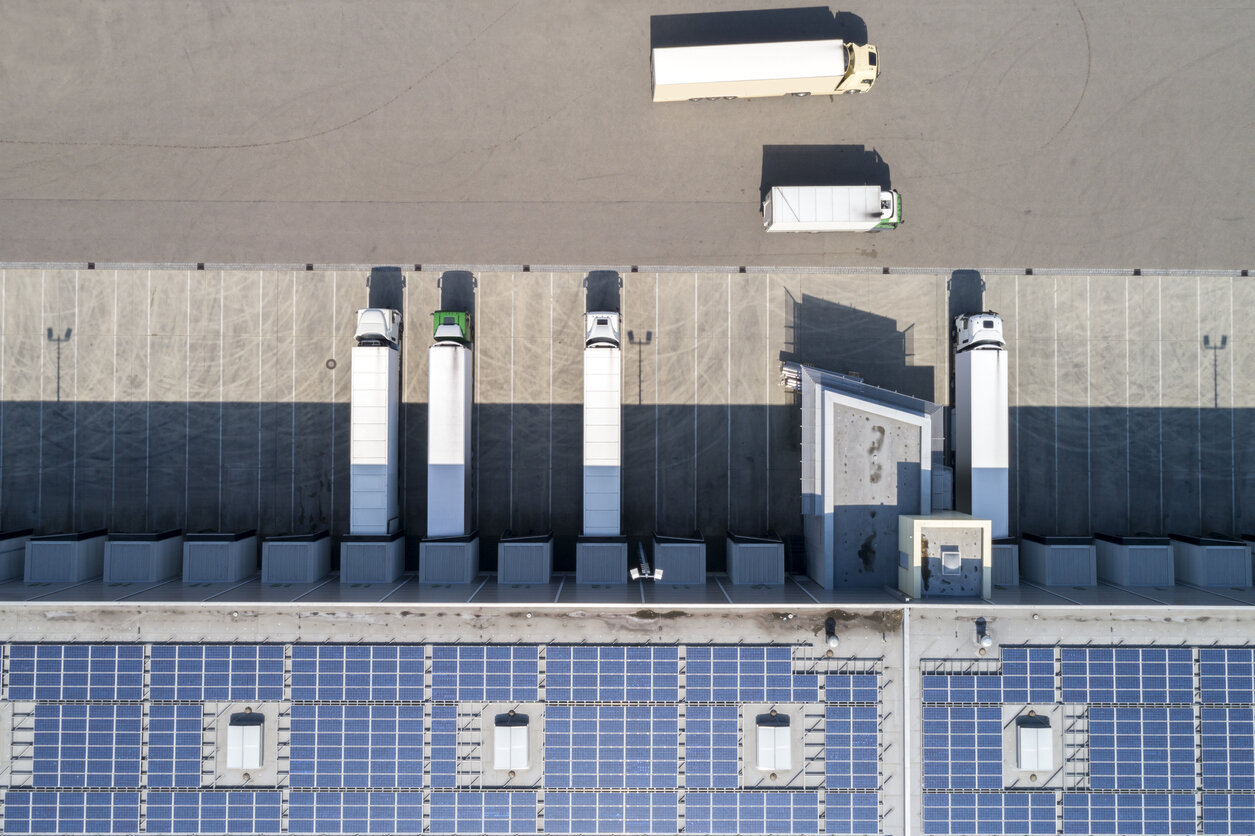Logistics moves the world. Supply chain management professionals and 3PL providers are responsible for keeping products and supplies circulating between vendors, manufacturers, and consumers. But what we do has consequences. Logistics is a messy industry by its very nature, but it’s also a necessary component of our modern world. That’s why it’s up to logistics professionals to make process improvements where they can and search for new and innovative ways to reduce their waste and consumption. Below are a collection of industry best practices designed to help your company mitigate wasteful practices in a meaningful way and encourage an eco-friendly supply chain.
1. Recycling Packing Materials on a Large-scale Basis
Cardboard, shrink wrap, packing peanuts: the logistics field is synonymous with disposable packing materials. Modern-day advancements have made effective, ultra-lightweight packing materials readily available. Many of these products are environmentally friendly by default, featuring a biodegradable design that drastically reduces the environmental impact of packaging waste.
Regardless of whether your warehouse uses modern, biodegradable products or more traditional corrugated cardboard, you should consider getting involved with an EPA-sponsored, large-scale recycling program. Currently, cardboard recycling efforts are at an all-time high, with almost 97% of cardboard packing materials being recycled per year in the United States. If your company uses wasteful packing materials, it is an industry-wide expectation that you recycle your waste in bulk.
2. Paperless/ paper-optimized Workplace
Make a conscious effort to reduce your use of paper because the environmental impact of paper production is catastrophic. Paper production involves:
-
Expansive deforestation
-
Increased CO2 emissions
-
Increased water consumption
-
High amounts of waste products post-consumption
In fact, a single sheet of paper requires more than 10 liters of water to produce, while 26% of the waste populating our landfills is paper in origin.
A paperless warehouse is the solution. One of the single most impactful ways for your 3PL company to reduce their consumption and waste is by implementing a warehouse management system (WMS). Through the use of a WMS, your company can reduce your paper usage to virtual zero, making significant strides toward sustainability.
3. LED and Motion-sensing Lights
A flip of the light switch is the most thought the average person ever gives electricity. Electricity is not without its own environmental consequences, however. Generating current requires a secondary power source such as water, coal, or wind, each with their own varying degree of environmental impact.
Electricity is necessary, though, and in most markets, you have little choice in where your power ultimately comes from. Therefore, you want to get the most out of your utilities as possible. Consider using high-efficiency bulbs in your warehouse. High-efficiency bulbs not only utilize electricity more efficiently, but they are also built to last up to a decade in some instances. Also, consider using motion sensors or smart controls over your interior lights that can help you optimize your utility usage.
4. Cross Docking
Logistics and supply chain management is all about efficiency. Finding better, quicker, and safer ways of doing things serves as a loose definition for the industry as a whole. Cross docking is the practice of unloading freight and supplies directly from the inbound truck to an outgoing vehicle. Think of it as a logistics layover. With cross docking, inventory doesn’t ever touch the warehouse back stock. Instead, it circulates in and out quickly.
What does that have to do with sustainability? A lot, as it turns out. Cross docking generates increased efficiency and decreased lead time. Under a just-in-time shipping method like cross docking, inventory spends no longer than a single day in the warehouse. This, in turn, creates a cascading effect. Less time in-house means less opportunity for waste, fewer resources used for storage, and greater access to logistically advantageous scenarios with outbound freight.
5. FTL/ LTL Shipping Recommendations
FTL and LTL stand for “full truckload” and “less than truckload,” respectively. Both are cargo shipping methods with pros and cons associated. With FTL shipping, you hire out the truck’s entire container space, whether you fill it or not, and then ship directly to your destination no matter the logistical considerations involved.
Less than truckload, on the other hand, seeks to optimize the truck’s cargo space with freight from multiple shippers included in the same delivery. While this method is less expedient, it is more fuel-efficient in much the same way public transit is more sustainable than driving an SUV.
While LTL has historically enjoyed the title of “environmentally friendly,” each method has its place and advantage. Consult with your 3PL provider or your vendors on a proactive basis to make sure your shipping method suits your purpose.
6. Sustainable Procurement Practices
In order to reach a better, more sustainable future, we have to hold each other accountable. We can control our own ecologically friendly business practices, but realizing that you can influence the entire industry is a game-changer. Seek to foster sustainable procurement practices like those listed above, but make sure the vendors that you partner with are like-minded as well. Choosing to do business with other environmentally friendly companies ensures that every link in your supply chain is green and sustainable.
BONUS: Carbon Credit Buyback Programs
For some industries, reducing their carbon footprint is easier said than done. The term “carbon footprint” refers to the total amount of carbon dioxide and greenhouse gases that a company produces. For 3PL providers, there will always be a certain level of waste and emissions inherent to their core operations. If significant reduction seems unattainable, industries such as ours can benefit from carbon offsets.
With a carbon offset, your company funds another company’s carbon reduction efforts instead of reducing your own footprint. Carbon offsets are predicated on that idea that there is an acceptable level of worldwide CO2 emissions. If you cannot reduce your own footprint, you can pay a fee for someone else to reduce theirs on your behalf.
It Takes a Village
Logistics pose environmental challenges by nature. Every effort to encourage an eco-friendly supply chain helps, though. That’s why it’s up to us to do what we can, where we can, as we all pursue a more sustainable future. No one single business is responsible; we’re all in this together.
For more information on 3PL sustainability practices or to discuss supply chain management services, please contact Symbia Logistics today.





